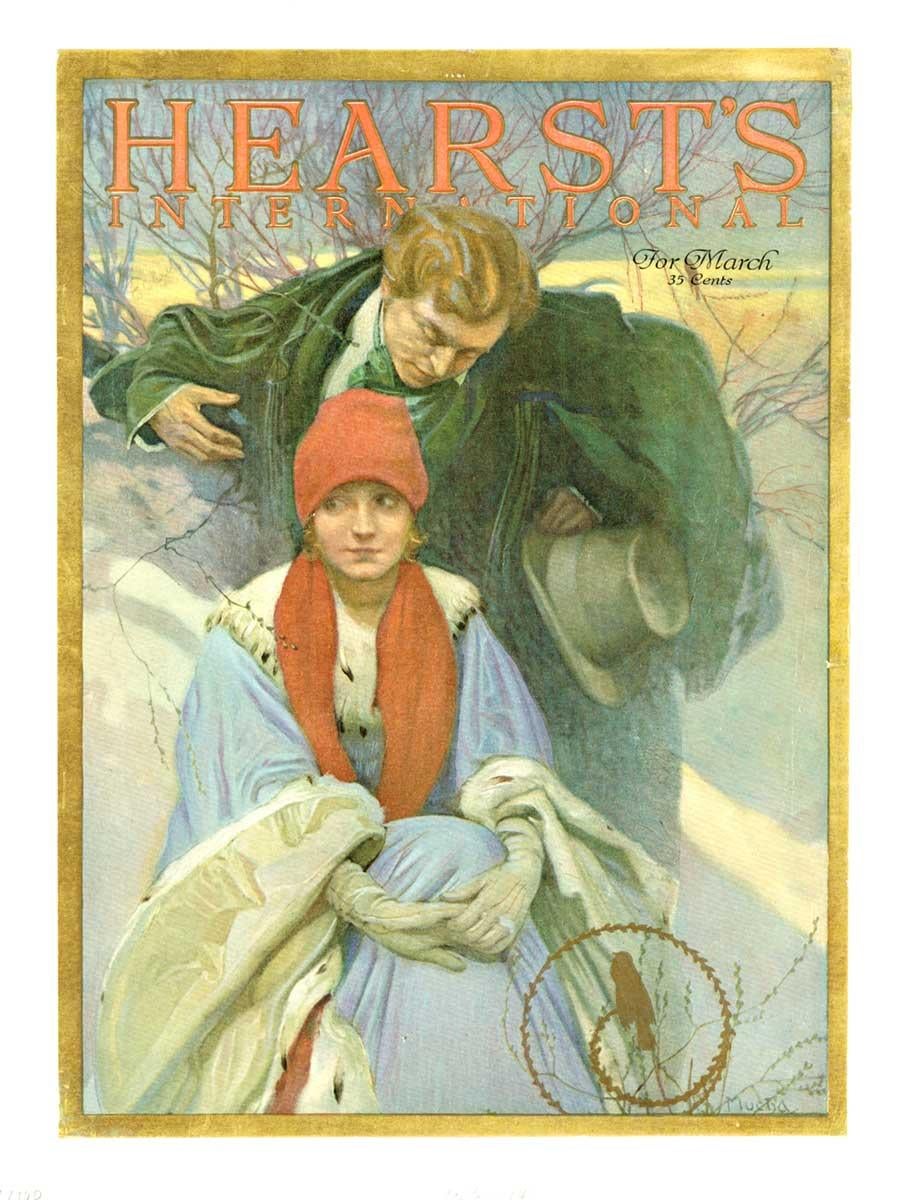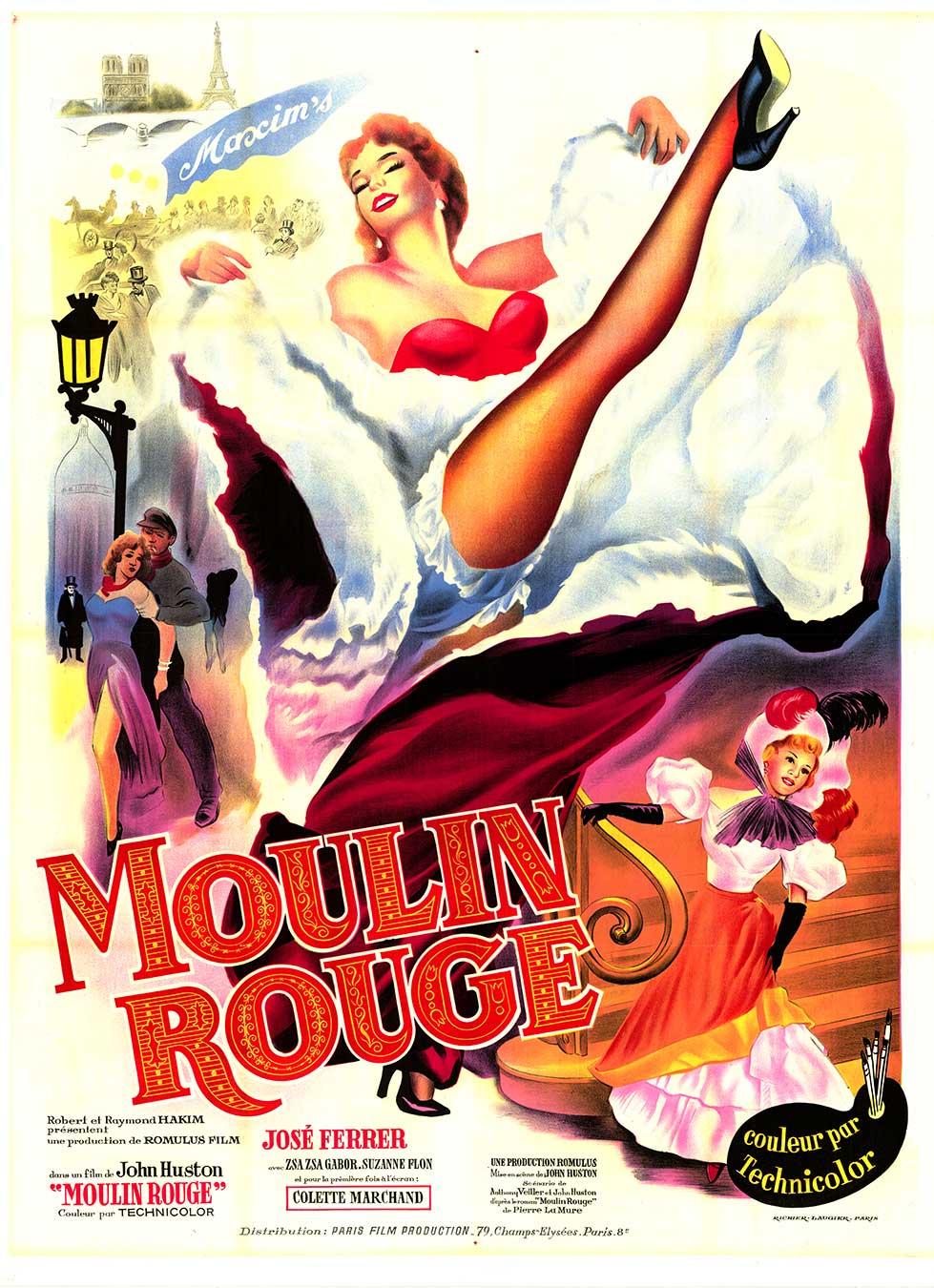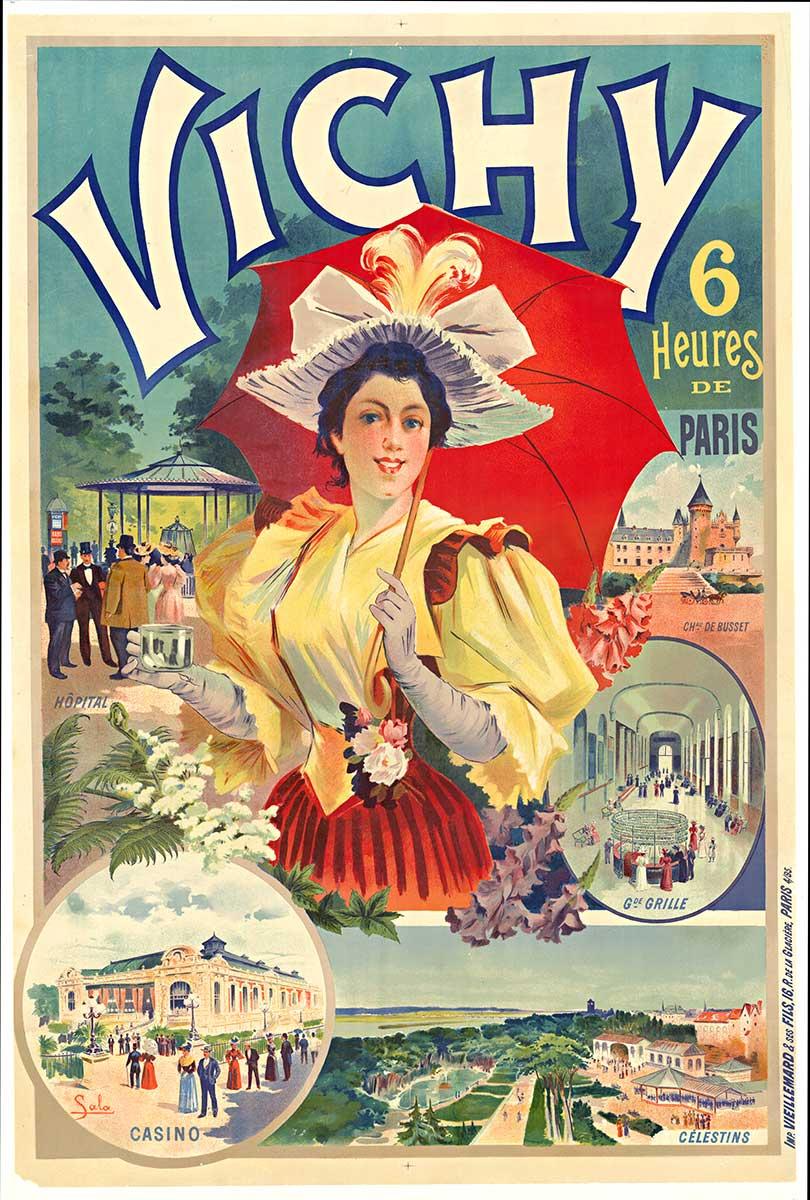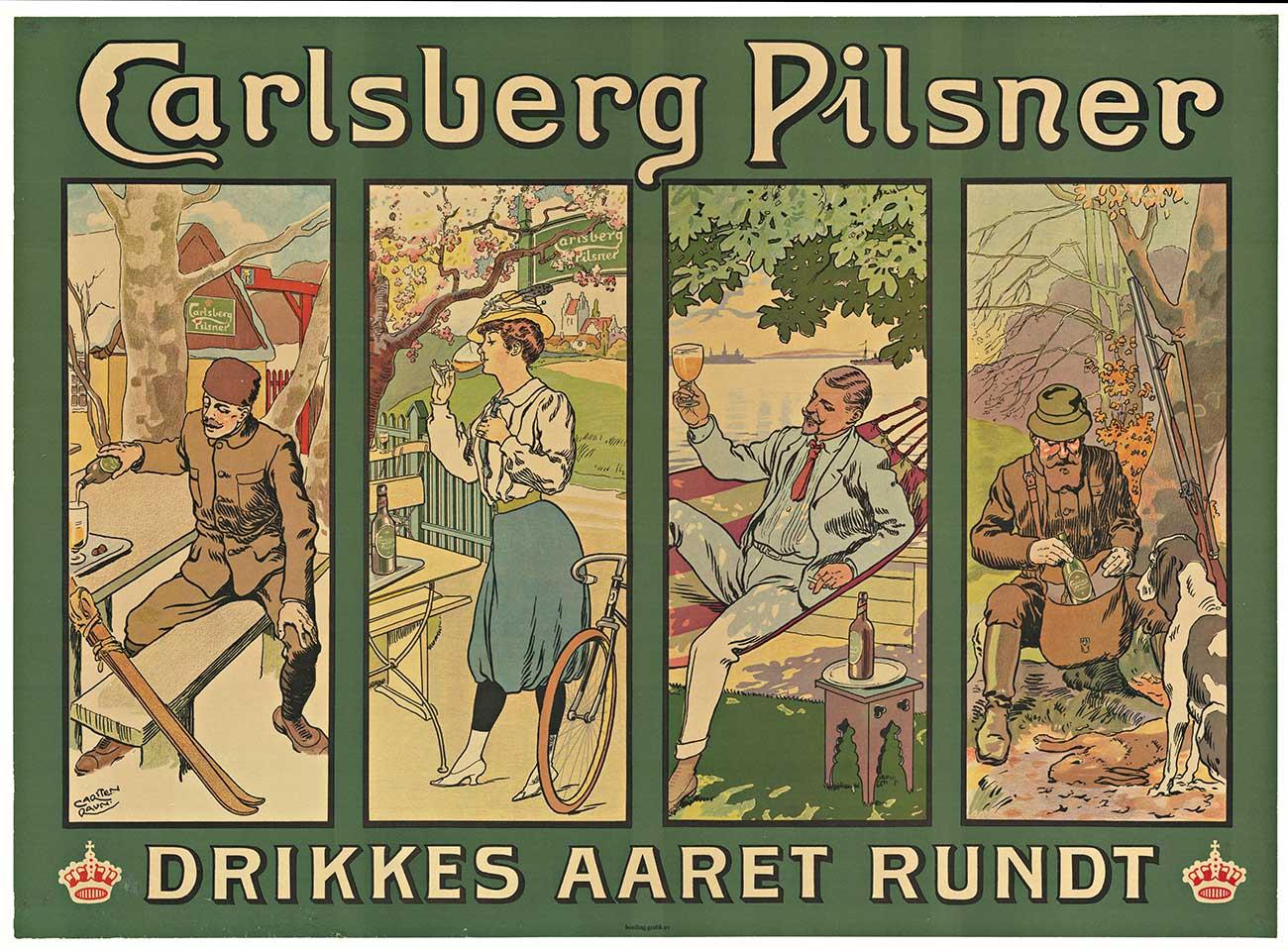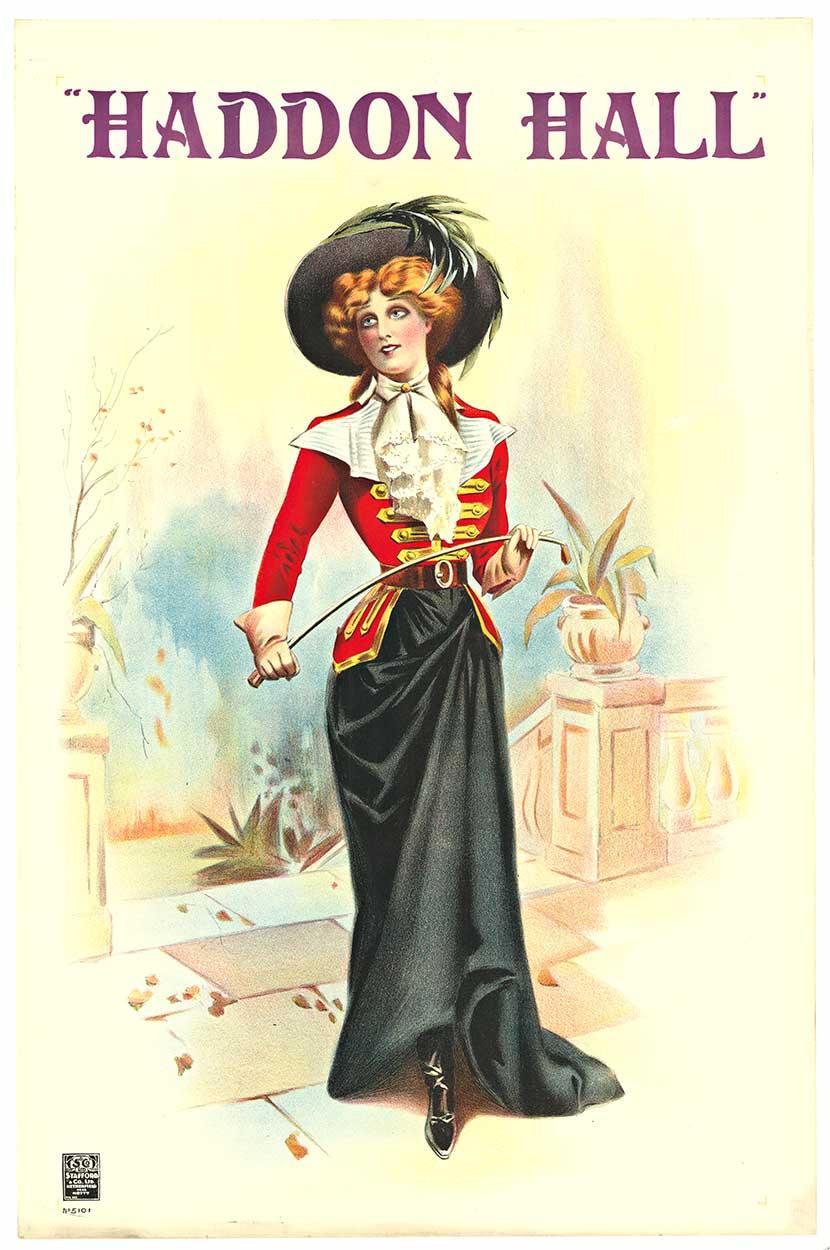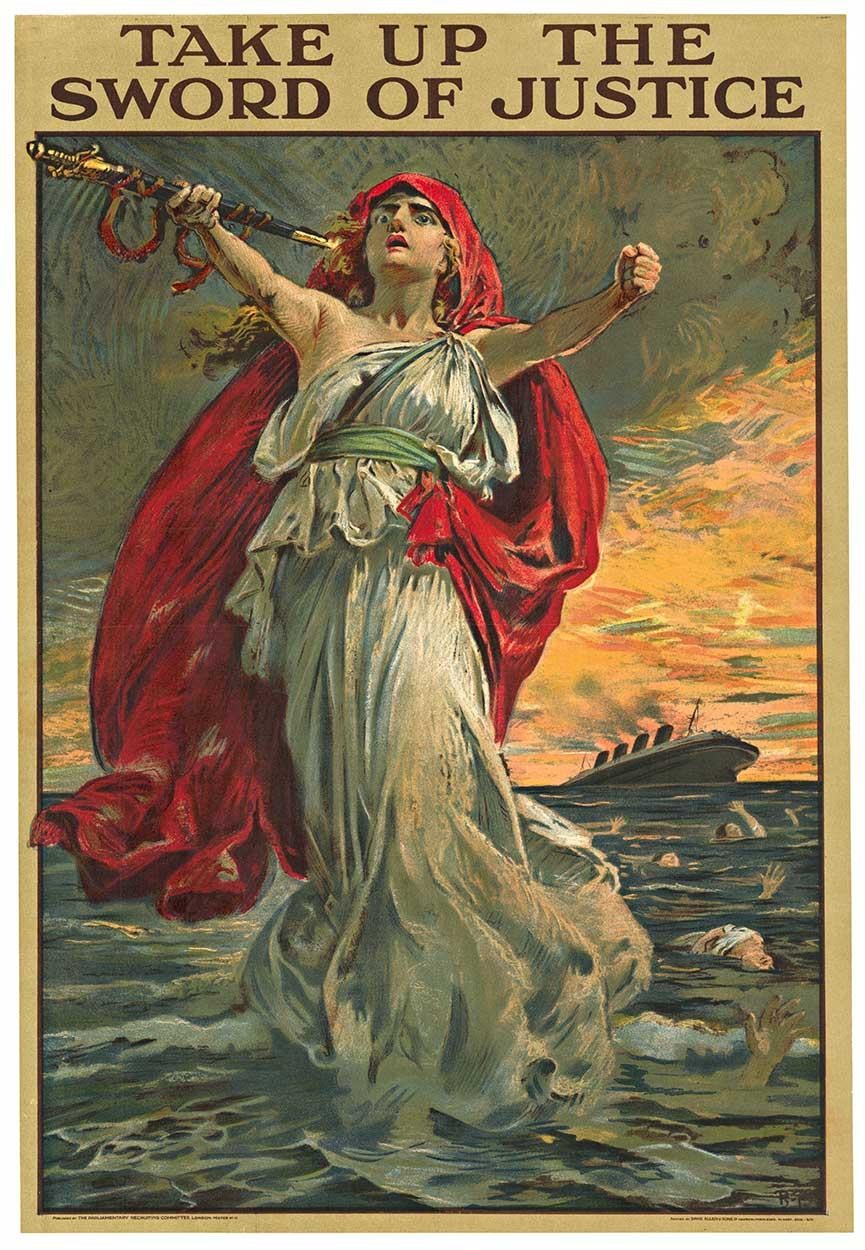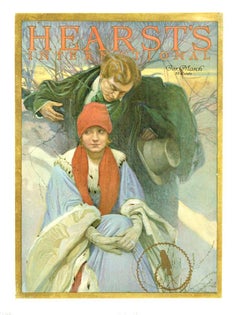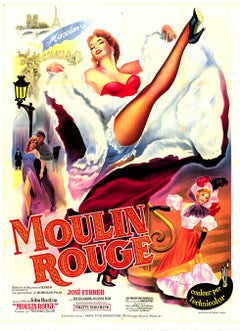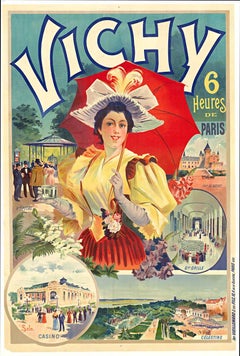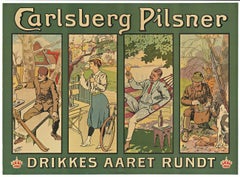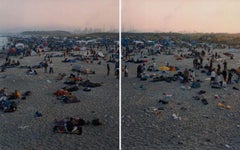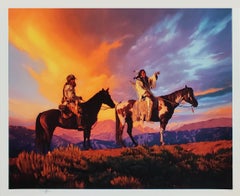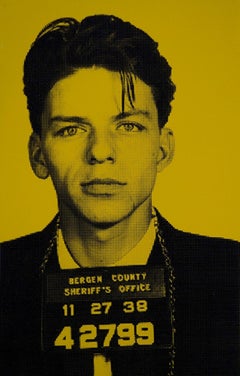Items Similar to Original "The Virgin Queen" US 1-sheet vintage movie poster NSS 55/302
Want more images or videos?
Request additional images or videos from the seller
1 of 7
UnknownOriginal "The Virgin Queen" US 1-sheet vintage movie poster NSS 55/3021955
1955
About the Item
Original "The Virgin Queen" vintage movie poster. NSS: 55/302
Archival linen backed with original issued fold marks restored. Linen-backed and in excellent condition. No paper loss, no stans, A condition. The poster shows Queen Bette Davis's eyes on the lower left of this original movie poster 1955. Grade A
(During this time all movie posters were folded to be shipped to the theater. The fold marks are not considered a defect.)
The movie detailed the tragic relationship between the elderly Queen and her youthful lover, who was too hot-headed and too ambitious. It ends with Essex's rebellion of 1601 and his execution, which (one can see) destroys the Queen as well. There was plenty of tension in that film, and one of the joys of it is watching how, from the start, every character knows how to play Essex's headstrong behavior against him. He literally destroys himself, taking his monarch with him.
• Movie posters from the mid-20th century often boast stunning and intricate artwork. They were carefully crafted to capture the essence of the film and entice audiences. The poster for "The Virgin Queen" is a visually appealing and nostalgic addition to your collection.
This is an Original Lithograph Vintage Poster; it is not a reproduction.
FREE Continental USA shipping.
- Creation Year:1955
- Dimensions:Height: 41.5 in (105.41 cm)Width: 27 in (68.58 cm)Depth: 0.05 in (1.27 mm)
- Medium:
- Movement & Style:
- Period:
- Condition:Original vintage poster in excellent condition with archival linen backing, ready to frame. Certificate of Authenticity with an embedded image of the poster. Vintage poster condition and quality affect the value of art.
- Gallery Location:Spokane, WA
- Reference Number:Seller: 93831stDibs: LU1404213895442
About the Seller
5.0
Platinum Seller
Premium sellers with a 4.7+ rating and 24-hour response times
Established in 1998
1stDibs seller since 2020
223 sales on 1stDibs
Typical response time: 1 hour
- ShippingRetrieving quote...Shipping from: Spokane, WA
- Return Policy
Authenticity Guarantee
In the unlikely event there’s an issue with an item’s authenticity, contact us within 1 year for a full refund. DetailsMoney-Back Guarantee
If your item is not as described, is damaged in transit, or does not arrive, contact us within 7 days for a full refund. Details24-Hour Cancellation
You have a 24-hour grace period in which to reconsider your purchase, with no questions asked.Vetted Professional Sellers
Our world-class sellers must adhere to strict standards for service and quality, maintaining the integrity of our listings.Price-Match Guarantee
If you find that a seller listed the same item for a lower price elsewhere, we’ll match it.Trusted Global Delivery
Our best-in-class carrier network provides specialized shipping options worldwide, including custom delivery.More From This Seller
View AllOriginal "HEARST'S INTERNATIONAL MARCH 1922" antique cover
By Alphonse Mucha
Located in Spokane, WA
Original March 1922 HEARST'S INTERNATIONAL, March 1922 cover created by the notable artist, Alphonse Mucha. Professional acid-free archival linen backed, presented in a 16" x 20" p...
Category
1920s Art Nouveau Portrait Prints
Materials
Offset
$1,240 Sale Price
20% Off
Original MOULIN ROUGE French Cabaret movie poster, Toulouse-Lautrec
Located in Spokane, WA
MOULIN ROUGE, original 1952 vintage movie poster; size: 47" x 63"; acid free archival linen backed and ready to frame full lithograph. Excellent condition. The poster is archival...
Category
1950s Art Nouveau Portrait Prints
Materials
Lithograph
Original Vichy stone lithograph vintage French poster
Located in Spokane, WA
Original vintage poster: Vichy travel poster. This is a stunning stone-lithographic turn-of-the-century poster. It advertises a train route to Vichy, France. The poster has been a...
Category
1890s Art Nouveau Portrait Prints
Materials
Lithograph
Original Carlsberg Pilsner vintage Danish beer poster. Drink All Round
Located in Spokane, WA
CARLSBERG PILSNER, artist: Carsten Ravn. This professional archival linen-backed lithograph is ready to frame. Carlsberg is synonymous with quality and tradition in the brewing world. Condition A-. Touched-up pin holes in the four corners. Minor touch-up near the bottom left crown emblem. Green is more of an old army green, and lettering is natural, unbleached, tan colored.
Carlsberg Pilsner
DRINK ALL YEAR ROUND
The horizontal poster shows four scenes of people enjoying their beer: a skier, a cycling woman, a dandy, and a hunter. Above them is the inscription “Carlsberg Pilsner“ and below it “DRIKKES AARET RUNDT.” The latter makes it clear that you can drink it all year round. The four scenes also show the four seasons and that you can always drink Carlsberg Pilsner. (Text is in Danish).
Carlsberg’s first brewery was just outside Copenhagen and was opened in 1847. However, it wasn't until 1904 that Carlsberg pilsner is brewed for the first time
This 1908 poster...
Category
Early 1900s Art Nouveau Portrait Prints
Materials
Lithograph
Haddon Hall - theater poster, full lithograph
Located in Spokane, WA
Original poster: Haddon Hall. Original theater vintage poster, archival linen backed. Printed in the United Kingdom. Vintage theater poster...
Category
1910s Art Nouveau Portrait Prints
Materials
Lithograph
Original 1915 'VTake Up The Sword Of Justice' antique poster Lusitania
Located in Spokane, WA
Original "Take Up the Sword of Justice," antique poster from 1915. Archival linen backed in good condition, ready to frame. The poster was printed for the Parliamentary Recruiting...
Category
1910s Art Nouveau Portrait Prints
Materials
Lithograph
You May Also Like
ROSIGNANO DAWN (DIPTYCH)
By Massimo Vitali
Located in Aventura, FL
Offset lithograph on paper. Each stamped and numbered on verso. Edition of 120. Size: 35.5 x 27.5 inches (each); 35.5 x 55 inches (total).
Artwork is in excellent condition. Certif...
Category
Early 2000s Photorealist Landscape Prints
Materials
Lithograph, Offset
$3,000 Sale Price
25% Off
The Pathfinder
By Mark Maggiori
Located in Draper, UT
Amazing work that is quite powerful in person! Must see. The Pathfinder, 2020, Giclee Print On 300 gsm cotton rag.
28 × 32 in from an Edition of 539.
O...
Category
2010s Land Landscape Prints
Materials
Paper
Panorama of Washington Hand- Colored Engraving pub. by Charles Magnum 1860
Located in Paonia, CO
1860 Hand -colored engraving "Panorama of Washington D. C. published by Charles Magnus This is a long sheet topped by an oval portrait of Washington...
Category
1860s Other Art Style Landscape Prints
Materials
Engraving
Frank Sinatra IV, Screenprint Art, Celebrity Art, Yellow Art, David Studwell
By David Studwell
Located in Deddington, GB
Frank Sinatra IV by David Studwell.
Hand pulled screen print of music icon Frank Sinatra.
58x36cm
Edition of 30
Signed by the artist
Category
21st Century and Contemporary Pop Art Portrait Prints
Materials
Paper, Screen
19th century color lithograph portraits ship seascape patriotic flags military
By Nathaniel Currier
Located in Milwaukee, WI
The present hand-colored lithograph is an excellent example of patriotic mid-nineteenth century American imagery. The print shows the battle and several of the major figures involved in the Battle of Lake Erie: At the center is a view of several frigates on the lake, embroiled in conflict. Above the battle is the quotation: "We have met the enemy and they are ours." Surrounding are laurel-lined roundels with portraits of Oliver Hazard Perry (1785-1819), Stephen Dicateur (1779-1820), Johnston Blakeley (1871-1814), William Bainbridge (1774-1833), David Porter (1780-1843), and James Lawrence (1781-1813) - all of these framed by American flags, banners and cannons. This print shows that the Battle of Lake Erie, part of the War of 1812, still held resonance for American audiences several decades later and was part of the larger narrative of the founding of the country.
9.5 x 13.5 inches, artwork
20 x 23.38 inches, frame
Entitled in the image
Signed in the stone, lower left "Lith. and Pub. by N. Currier"
Inscribed lower right "2 Spruce N.Y." and "No. 1"
Copyrighted lower center "Entered according to Act of Congress in the year 1846 by N. Currier in the Clerk's office of the Southern District of N.Y."
Framed to conservation standards using 100 percent rag matting and housed in a gold gilded moulding.
Nathaniel Currier was a tall introspective man with a melancholy nature. He could captivate people with his piercing stare or charm them with his sparkling blue eyes. Nathaniel was born in Roxbury, Massachusetts on March 27th, 1813, the second of four children. His parents, Nathaniel and Hannah Currier, were distant cousins who lived a humble yet spartan life. When Nathaniel was eight years old, tragedy struck. Nathaniel’s father unexpectedly passed away leaving Nathaniel and his eleven-year-old brother Lorenzo to provide for the family. In addition to their mother, Nathaniel and Lorenzo had to care for six-year-old sister Elizabeth and two-year-old brother Charles. Nathaniel worked a series of odd jobs to support the family, and at fifteen, he started what would become a life-long career when he apprenticed in the Boston lithography shop of William and John Pendleton.
A Bavarian gentleman named Alois Senefelder invented lithography just 30 years prior to young Nat Currier’s apprenticeship. While under the employ of the brothers Pendleton, Nat was taught the art of lithography by the firm’s chief printer, a French national named Dubois, who brought the lithography trade to America.
Lithography involves grinding a piece of limestone flat and smooth then drawing in mirror image on the stone with a special grease pencil. After the image is completed, the stone is etched with a solution of aqua fortis leaving the greased areas in slight relief. Water is then used to wet the stone and greased-ink is rolled onto the raised areas. Since grease and water do not mix, the greased-ink is repelled by the moisture on the stone and clings to the original grease pencil lines. The stone is then placed in a press and used as a printing block to impart black on white images to paper.
In 1833, now twenty-years old and an accomplished lithographer, Nat Currier left Boston and moved to Philadelphia to do contract work for M.E.D. Brown, a noted engraver and printer. With the promise of good money, Currier hired on to help Brown prepare lithographic stones of scientific images for the American Journal of Sciences and Arts. When Nat completed the contract work in 1834, he traveled to New York City to work once again for his mentor John Pendleton, who was now operating his own shop located at 137 Broadway. Soon after the reunion, Pendleton expressed an interest in returning to Boston and offered to sell his print shop to Currier. Young Nat did not have the financial resources to buy the shop, but being the resourceful type he found another local printer by the name of Stodart. Together they bought Pendleton’s business.
The firm ‘Currier & Stodart’ specialized in "job" printing. They produced many different types of printed items, most notably music manuscripts for local publishers. By 1835, Stodart was frustrated that the business was not making enough money and he ended the partnership, taking his investment with him. With little more than some lithographic stones, and a talent for his trade, twenty-two year old Nat Currier set up shop in a temporary office at 1 Wall Street in New York City. He named his new enterprise ‘N. Currier, Lithographer’
Nathaniel continued as a job printer and duplicated everything from music sheets to architectural plans. He experimented with portraits, disaster scenes and memorial prints, and any thing that he could sell to the public from tables in front of his shop. During 1835 he produced a disaster print Ruins of the Planter's Hotel, New Orleans, which fell at two O’clock on the Morning of the 15th of May 1835, burying 50 persons, 40 of whom Escaped with their Lives. The public had a thirst for newsworthy events, and newspapers of the day did not include pictures. By producing this print, Nat gave the public a new way to “see” the news. The print sold reasonably well, an important fact that was not lost on Currier.
Nat met and married Eliza Farnsworth in 1840. He also produced a print that same year titled Awful Conflagration of the Steamboat Lexington in Long Island Sound on Monday Evening, January 18, 1840, by which melancholy occurrence over One Hundred Persons Perished. This print sold out very quickly, and Currier was approached by an enterprising publication who contracted him to print a single sheet addition of their paper, the New York Sun. This single page paper is presumed to be the first illustrated newspaper ever published.
The success of the Lexington print launched his career nationally and put him in a position to finally lift his family up. In 1841, Nat and Eliza had their first child, a son they named Edward West Currier. That same year Nat hired his twenty-one year old brother Charles and taught him the lithography trade, he also hired his artistically inclined brother Lorenzo to travel out west and make sketches of the new frontier as material for future prints. Charles worked for the firm on and off over the years, and invented a new type of lithographic crayon which he patented and named the Crayola. Lorenzo continued selling sketches to Nat for the next few years.
In 1843, Nat and Eliza had a daughter, Eliza West Currier, but tragedy struck in early 1847 when their young daughter died from a prolonged illness. Nat and Eliza were grief stricken, and Eliza, driven by despair, gave up on life and passed away just four months after her daughter’s death.
The subject of Nat Currier’s artwork changed following the death of his wife and daughter, and he produced many memorial prints and sentimental prints during the late 1840s. The memorial prints generally depicted grief stricken families posed by gravestones (the stones were left blank so the purchasers could fill in the names of the dearly departed). The sentimental prints usually depicted idealized portraits of women and children, titled with popular Christian names of the day.
Late in 1847, Nat Currier married Lura Ormsbee, a friend of the family. Lura was a self-sufficient woman, and she immediately set out to help Nat raise six-year-old Edward and get their house in order. In 1849, Lura delivered a son, Walter Black Currier, but fate dealt them a blow when young Walter died one year later. While Nat and Lura were grieving the loss of their new son, word came from San Francisco that Nat’s brother Lorenzo had also passed away from a brief illness. Nat sank deeper into his natural quiet melancholy. Friends stopped by to console the couple, and Lura began to set an extra place at their table for these unexpected guests. She continued this tradition throughout their lives.
In 1852, Charles introduced a friend, James Merritt Ives, to Nat and suggested he hire him as a bookkeeper. Jim Ives was a native New Yorker born in 1824 and raised on the grounds of Bellevue Hospital where his father was employed as superintendent. Jim was a self-trained artist and professional bookkeeper. He was also a plump and jovial man, presenting the exact opposite image of his new boss.
Jim Ives met Charles Currier through Caroline Clark, the object of Jim’s affection. Caroline’s sister Elizabeth was married to Charles, and Caroline was a close friend of the Currier family. Jim eventually proposed marriage to Caroline and solicited an introduction to Nat Currier, through Charles, in hopes of securing a more stable income to support his future wife.
Ives quickly set out to improve and modernize his new employer’s bookkeeping methods. He reorganized the firm’s sizable inventory, and used his artistic skills to streamline the firm’s production methods. By 1857, Nathaniel had become so dependent on Jims’ skills and initiative that he offered him a full partnership in the firm and appointed him general manager. The two men chose the name ‘Currier & Ives’ for the new partnership, and became close friends.
Currier & Ives produced their prints in a building at 33 Spruce Street where they occupied the third, fourth and fifth floors. The third floor was devoted to the hand operated printing presses that were built by Nat's cousin, Cyrus Currier, at his shop Cyrus Currier & Sons in Newark, NJ. The fourth floor found the artists, lithographers and the stone grinders at work. The fifth floor housed the coloring department, and was one of the earliest production lines in the country. The colorists were generally immigrant girls, mostly German, who came to America with some formal artistic training. Each colorist was responsible for adding a single color to a print. As a colorist finished applying their color, the print was passed down the line to the next colorist to add their color. The colorists worked from a master print displayed above their table, which showed where the proper colors were to be placed. At the end of the table was a touch up artist who checked the prints for quality, touching-in areas that may have been missed as it passed down the line. During the Civil War, demand for prints became so great that coloring stencils were developed to speed up production.
Although most Currier & Ives prints were colored in house, some were sent out to contract artists. The rate Currier & Ives paid these artists for coloring work was one dollar per one hundred small folios (a penny a print) and one dollar per one dozen large folios. Currier & Ives also offered uncolored prints to dealers, with instructions (included on the price list) on how to 'prepare the prints for coloring.' In addition, schools could order uncolored prints from the firm’s catalogue to use in their painting classes.
Nathaniel Currier and James Merritt Ives attracted a wide circle of friends during their years in business. Some of their more famous acquaintances included Horace Greeley, Phineas T. Barnum, and the outspoken abolitionists Rev. Henry Ward, and John Greenleaf Whittier (the latter being a cousin of Mr. Currier).
Nat Currier and Jim Ives described their business as "Publishers of Cheap and Popular Pictures" and produced many categories of prints. These included Disaster Scenes, Sentimental Images, Sports, Humor, Hunting Scenes, Politics, Religion, City and Rural Scenes, Trains, Ships, Fire Fighters, Famous Race Horses, Historical Portraits, and just about any other topic that satisfied the general public's taste. In all, the firm produced in excess of 7500 different titles, totaling over one million prints produced from 1835 to 1907.
Nat Currier retired in 1880, and signed over his share of the firm to his son Edward. Nat died eight years later at his summer home 'Lion’s Gate' in Amesbury, Massachusetts. Jim Ives remained active in the firm until his death in 1895, when his share of the firm passed to his eldest son, Chauncey.
In 1902, faced will failing health from the ravages of Tuberculosis, Edward Currier sold his share of the firm to Chauncey Ives...
Category
1850s Victorian Landscape Prints
Materials
Watercolor, Lithograph
"In the Beginning There Were Mistakes" Gallery Poster
By Charles Bragg
Located in Clinton Township, MI
"In the Beginning There Were Mistakes" is a Gallery Poster featuring the artwork of CHARLES BRAGG (American, b. 1931). The print measures 28 x 22 inches and is unframed. It is Plate-...
Category
Late 20th Century Portrait Prints
Materials
Lithograph
$128 Sale Price
20% Off
